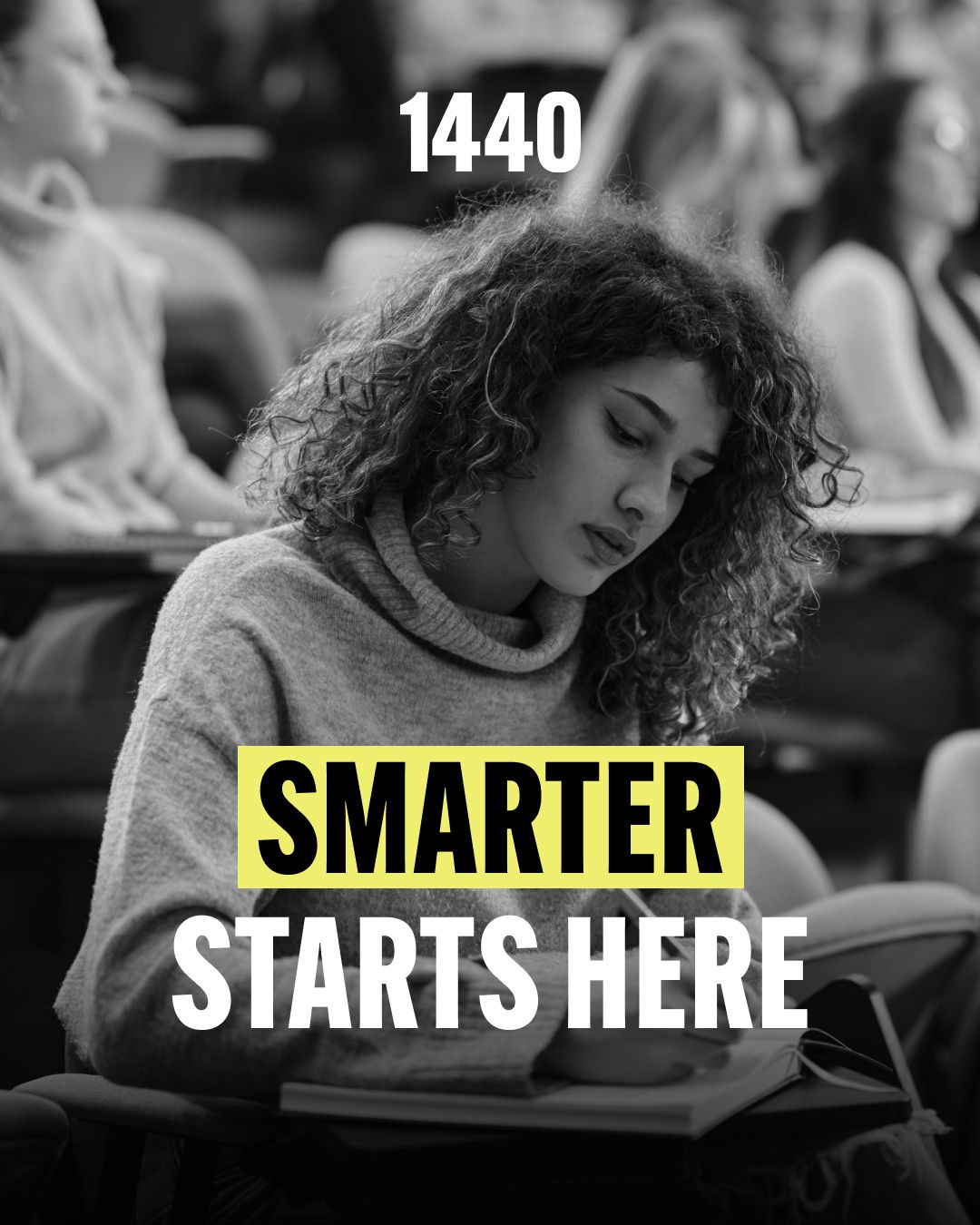Join over 4 million Americans who start their day with 1440 – your daily digest for unbiased, fact-centric news. From politics to sports, we cover it all by analyzing over 100 sources. Our concise, 5-minute read lands in your inbox each morning at no cost. Experience news without the noise; let 1440 help you make up your own mind. Sign up now and invite your friends and family to be part of the informed.
Hi!
Welcome to AIMedily.
I’m back from the Colorado backcountry trip I mentioned in the last issue.
It was a beautiful (and exhausting) 16-mile hike (26.5 km) to a glacial lake in the Rocky Mountains.
It was remote, and we didn’t have a connection, but we knew we were on the right path using the GPS.
As you may know, GPS uses satellites.
But did you know that AI allows you to navigate without satellites?
It uses 3D motion to guide you in remote places, tunnels and even underground.
That’s the future of navigation.
Now, let’s dive into today’s issue:
🤖 AIBytes
Researchers develop and validate a handheld smartphone-based system for clinical gait analysis.
🔬 Methods
Study design: Experimental development and validation.
Data: 148–161 individuals across three datasets.
Included healthy controls, neurologically impaired patients, pediatric patients, and prosthesis users.
~21 hours of gait recordings.
Tool: A smartphone app (“Portable Biomechanics Lab,” PBL) collected handheld video and optional sensor data → sent to the cloud →processed through a biomechanical model.
Assessments: Joint angles, pelvis translation, gait metrics, reliability, and sensitivity.
📊 Results
Joint angle errors were ≤ 3° across all groups.
Pelvis translation errors were within a few centimeters.
Gait metrics showed excellent reliability.
Smartphone detected changes after surgery more sensitively than other systems.
🔑 Key Takeaways
A handheld smartphone can accurately measure gait biomechanics in clinical settings.
Measures were reliable and precise across diverse patient types.
The system offers a scalable, low-cost method for objective gait monitoring.
🔗 Peiffer JD, Shah K, Djuraskovic I, et al. Portable Biomechanics Laboratory: Clinically Accessible Movement Analysis from a Handheld Smartphone. arXiv. Published July 11, 2025. https://doi.org/10.48550/arXiv.2507.08268
Can AI truly assist clinicians during live patient visits?
This study tested AI Consult, an LLM-based clinical decision support tool developed by Penda Health that used GPT-4o.
The goal was to lower diagnostic and treatment errors in real-time primary care visits.
🔬 Methods
Study Design: Prospective interventional study. Deployment across 15 Penda Health clinics.
Participants: ~100 mid‑level providers in Nairobi delivered 39,849 patient visits between January and April 2025.
Intervention: AI Consultant silently monitored clinician decisions during visits.
It flagged potential errors (diagnosis, treatment, history-taking) using a real-time alert system (green/yellow/red light).
It did not actively intervene in care.
Comparison: Matched clinics without AI support.
Outcome Measures: Rates of diagnostic and treatment errors (identified via clinician note review).
📊 Results
Diagnostic errors dropped by 16% (significant).
Treatment errors decreased by 13%.
History-taking errors fell by 32%
No increase in false alerts or reported harm.
AI delivered alerts with <10-sec latency and was well-received.
🔑 Key Takeaways
LLM-supported CDSS can reduce real-world clinical errors in non-physician-led primary care.
The silent monitoring + alert-only design preserved clinician autonomy (while providing a safety net).
Reductions in both diagnostic and treatment errors highlight the clinical value.
Positive clinician feedback suggests potential for scalable LLM-CDSS deployment in similar low-resource settings.
🔗 Korom R, Kiptinness S, Adan N, et al. AI-based clinical decision support for primary care: a real-world study. Penda Health/OpenAI. 2025. (Preprint)
Can AI judge how well a patient performs rehab exercises?
Researchers extracted data from skeletal joints (via motion capture) of patients performing rehab exercises and fed it into a pre-trained LLM (GPT-4o).
Using prompting techniques, LLM evaluates exercise quality and provides feedback in natural language to help improve movements.
🔬 Methods
Study design: Experimental AI development and validation on existing datasets.
Datasets used:
UI‑PRMD: Is a Dataset of movements recorded during 10 exercises used in rehabilitation programs by 10 healthy subjects. Recorded via motion capture with Vicon and Kinect.
REHAB24‑6 (6 exercises, 10 participants): A dataset of rehabilitation exercises captured using 2 RGB cameras and motion capture.
📊 Results
Classification accuracy: UP to 68% in the UI‑PRMD dataset.
Quality metrics improved with certainty scoring and chain‑of‑thought prompts.
GPT‑4o generated specific feedback like a physiotherapist, accurately highlighting movement issues.
🔑 Key Takeaways
Smart prompting enables LLMs to evaluate exercise form and generate useful text feedback using joint data.
Chain‑of‑thought and certainty prompts improve accuracy and clarity.
When prompted to act like a therapist, GPT-4 provides feedback that sounds realistic and matches the patient’s exercise form.
In the future, this approach can support therapists on virtual platforms to help patients perform exercises correctly.
🔗 Tang J, Abedi A, Colella TJF, Khan SS. Rehabilitation exercise quality assessment and feedback generation using large language models with prompt engineering. arXiv. Published May 23, 2025. https://doi.org/10.48550/arXiv.2505.18412
Assess an AI-driven hybrid system combining dual-arm robotics and EMG-guided electrical stimulation for the upper limb after stroke.
🔬 Methods
Study design: Experimental pilot study.
Participants: 3 male post-stroke patients (ages 48–66) with upper-limb hemiparesis.
Intervention:
Dual-arm robotic exoskeleton designed for bilateral rehabilitation with surface EMG sensors connected to a Machine Learning Model to detect muscle fatigue.
The information provided modulated Neuromuscular electrical stimulation (NMES) in real time.
Clinicians could monitor remotely.
30 sessions over 6 weeks.
Assessments:
Changes in range of motion, active, and passive torque.
Fatigue classification accuracy via EMG.
Progress was monitored across baseline and repeated sessions.
📊 Results
Range of motion improved by 44%.
Active torque increased by 45%.
Passive torque decreased by 36%.
The fatigue detection model achieved 95% accuracy.
The system adjusted the Neuromuscular Electric Stimulation levels based on fatigue status, enhancing safety and personalization.
🔑 Key Takeaways
This AI system coordinates robotic movement and adjusts muscle stimulation using real-time EMG input.
Patients showed meaningful improvements in strength, range, and fatigue management.
The adaptive control model personalizes therapy, reducing overstimulation.
The pilot supports future clinical studies using intelligent, multi-modal rehabilitation platforms.
🔗 Ben Abdallah I, Bouteraa Y, Alotaibi A. AI-driven hybrid rehabilitation: synergizing robotics and electrical stimulation for upper-limb recovery after stroke. Front Bioeng Biotechnol. 2025 Jun 25;13:1619247. https://doi.org/10.3389/fbioe.2025.1619247
🦾TechTool
Cutting-edge wearable technology designed to advance research and enhance patient care.
These socks capture metrics like electrodermal activity, heart rate variability, skin temperature, and motion.
Wristband for essential tremor has been approved by the FDA.
CE-certified for support of diagnosis and treatment as a medical co-pilot: An AI-assisted LLM tool for clinical decision support.
Is an AI Presentation Maker. You write the Text, and AI transforms it into Slides in seconds.
🧬AIMedily Snaps
🧬Research papers from 14 academic institutions from 8 countries have been caught hiding messages (in white text or small fonts) in papers to get positive peer reviews (Link).
🧬A new study warns that the step-by-step reasoning behind AI decisions — may not be reliable long-term (link).
🧬A guide for authors and reviewers in reporting LLM studies from NEJM AI (link).
🧬Healthcare AI Bootcamp virtual sessions (Link).
🧩TriviaRX
What major scientific breakthrough in the 1960s enabled brain–computer interfaces (BCIs) to be explored clinically?
A) Development of functional MRI
B) Discovery of brain plasticity
C) Invention of dry EEG caps
D) Use of scalp EEG for cursor control
Check the answer in the next issue.
👉Now, the answer to the last TriviaRx!
✅ C) Selspot system.
📚 Developed in Sweden, Selspot used LEDs and photodiodes to track limb motion in 3D — paving the way for modern marker-based motion.
Ref: Cappozzo et al., Clin Biomech, 1991.
That’s it for today.
As always, thank you for taking the time to read.
Please help me share AIMedily with your friends 🙂.
You can either:
💌Forward this email
📲Share this link on your phone.
Thank you!
Until next Wednesday.
Itzel Fer, MD PM&R
Join my Newsletter 👉 AIMedily.com
Forwarded this email? Sign up here
How did you like today's newsletter?
Start learning AI in 2025
Keeping up with AI is hard – we get it!
That’s why over 1M professionals read Superhuman AI to stay ahead.
Get daily AI news, tools, and tutorials
Learn new AI skills you can use at work in 3 mins a day
Become 10X more productive









